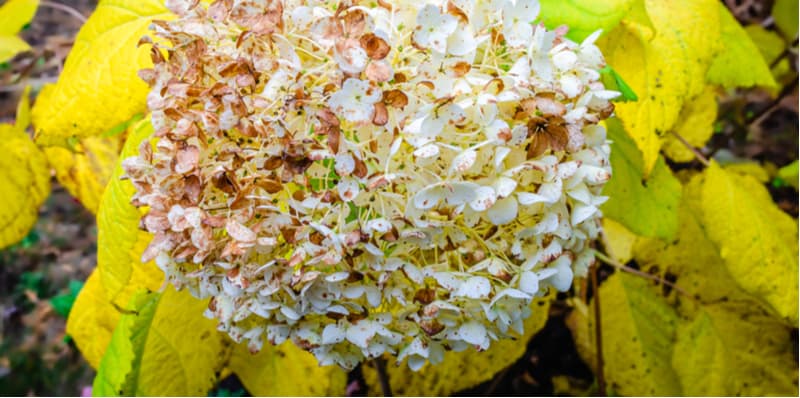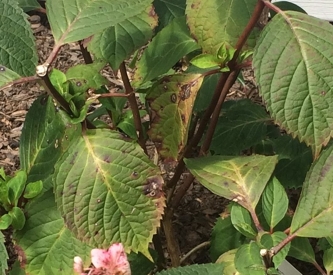How Hydrangea Leaves Turning Yellow can Save You Time, Stress, and Money.
Table of ContentsThe Best Strategy To Use For Hydrangea Leaves Turning YellowGetting My Hydrangea Leaves Turning Yellow To WorkThe Hydrangea Leaves Turning Yellow PDFsSome Ideas on Hydrangea Leaves Turning Yellow You Should KnowThe Ultimate Guide To Hydrangea Leaves Turning YellowThe 10-Second Trick For Hydrangea Leaves Turning Yellow
One opportunity is that the plant is not obtaining adequate sunshine. During the wintertime months, the days are much shorter, and the sunlight is not as intense, so ensure to position your Hydrangea in an area where it will certainly get at least six hours of sunlight each day. Another reason for Hydrangea yellow fallen leaves in winter could be too much water.Finally, the leaves might be transforming yellow as a result of temperature level stress and anxiety. Hydrangeas like cooler temperature levels, so if the plant remains in an area that gets too hot or also chilly, the leaves will transform yellow. If you believe temperature stress could be the concern, try moving your Hydrangea to a various place or safeguarding it from the elements with a cloth wrap.
New growth will certainly be observed in early spring, when you'll see eco-friendly foliage growing from stems that may have appeared dead. Nonetheless, if your fallen leaves are turning brownish in spring or summer season, there are likely various other aspects at play. The precise factors rely on the selection and their expanding problems, however as a whole, brown hydrangea fallen leaves signify dehydration and wilting in the warmth
Getting My Hydrangea Leaves Turning Yellow To Work

Wilting is triggered by lack of wetness, meaning there are a few great tricks to utilize to avoid this from happening. Provide your hydrangeas a healthy and balanced glug of water every few days when the temperature levels are climbing up high, and treat the soil to much better preserve moisture. After watering, a dab of compost around the base of each plant need to aid with this by keeping wetness in the dirt.
This interferes with fungis spores from clearing up. "The Botrytis fungi grows in amazing and damp problems, so stay clear of bathing the entire plant when watering and just water at the roots," shares Roy Nicol, a Master Gardener. If you've missed out on the possibility for avoidance and are dealing with an infection you ought to eliminate all dead or drastically contaminated fallen leaves from the plant and damage them to stop further spread.
The Main Principles Of Hydrangea Leaves Turning Yellow
As a basic policy of this content thumb, we suggest removing fallen leaves when they are 50% brownish or higher. While browning brought on by any kind of reason can't be turned around, taking the restorative activity explained above will urge the plant to expand new fallen leaves so the damaged fallen leaves either drop off naturally or can be gotten rid of by the garden enthusiast.
Hydrangeas need to be watered just when the top few inches of dirt are dry, and must be offered a complete soaking each time. Underwatered hydrangeas are likely to have yellow, wilting, and sagging leaves.
The method you deal with hydrangea leaves turning yellow depends upon the key problem creating the yellow fallen leaves. This can be challenging to establish, but when you do you will certainly be able to adjust your plant treatment as necessary to look after the problem. As pointed out in the past, a common problem with hydrangeas is nutrition deficiencies.
The Basic Principles Of Hydrangea Leaves Turning Yellow
During the peak growing period, you need to sprinkle at a price of regarding 1 inch each week. If you are fretted about not correctly watering your hydrangeas, there are a number of things you can do. Including compost to the base of the plants over the origin zone help to regulate the temperature level around the hedge and preserve water in the dirt.
You can acquire and set up easy watering globes. Sprinkling globes hold water in them and slowly launch this water right into the soil as the ground becomes completely dry. Just fill up the world with water, stick the spout right into the dirt within the root zone near the base of the plant, and leave it in position till all the water is gone.
If it is also extreme, some plants will certainly never ever recuperate from transplant shock and will remain to decline until they die. Minimize transplant shock by including as several origins as feasible when digging up your plant to move it. Be certain to give even more water than normal in the weeks complying with planting to aid your plant recoup and grow new origins.
The Best Strategy To Use For Hydrangea Leaves Turning Yellow
To avoid spreading out fungal illness, be certain to thouroughly clean and decontaminate any type of pruning devices before and after use. You can try to purge the origins with water to eliminate excess fertlizer.
Your hydrangea plant prefers well-drained, damp dirt. If the pot has bad water drainage, or your soil is swamped, the fallen leaves will begin to webpage turn yellow. Overwatering makes the soil soaked (Hydrangea Leaves Turning Yellow). Swamped and soggy dirt can lead to stunted growth, leaf staining, and, worst of all, rot fungal conditions. Despite the fact that over-watering can be harmful, under-watering is not a choice either.
If you don't water your hydrangea plant for more than a week, the fallen leaves will certainly start turning yellow. Fungal illness that strike the i thought about this plants tend to show indications on the origins and the fallen leaves of the plant. Among these diseases is root rot, that makes it hard for the plant to feed properly.
The Ultimate Guide To Hydrangea Leaves Turning Yellow
